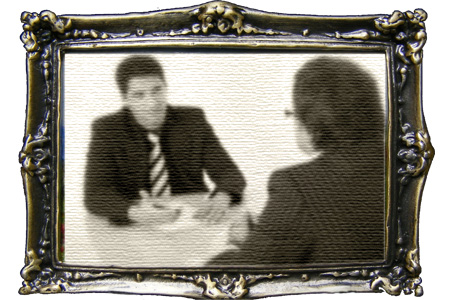 Framing is one of those NLP techniques that fits in well with other NLP techniques. The framing technique itself is a type of emotional amplifier or deamplifier, which works by rebuilding (or could be perhaps considered correcting) links in your limbic system between your amygdala and your hippocampus.
Framing is one of those NLP techniques that fits in well with other NLP techniques. The framing technique itself is a type of emotional amplifier or deamplifier, which works by rebuilding (or could be perhaps considered correcting) links in your limbic system between your amygdala and your hippocampus.
What makes the framing NLP technique most affective is its simplicity and ability to be applied easily in conjunction with other NLP techniques. Before I explain exactly how to do framing, it is best if you can understand its importance and applications before you go into it.
We learn lessons in life from bad memories, and good memories. In effect, memories can be bad or good, but in reality memories are emotionless "highlight reels" of past events. No, that's not a typo, I do mean emotionless.
Before you rage and turn off your computer in anger, please consider this - memories and emotions are clearly stored/produced by different parts of the brain. Given that those two parts of the brain are right next to each other, but they are still separate parts of the brain. The hippocampus stores and produces your memories, and your amygdala is responsible for your emotions.
Exercise: Right now, recall a memory that has negative emotions attached. Nothing traumatic! Use something like failing a test or an unsuccessful interview. Got one? Good. Read on.
What just happened?
Without going into too much detail, your frontal lobe (prefrontal cortex) and thalamus interacted with your hippocampus and the rest of the limbic system to discover a suitable negative memory.
Hippocampus (responsible for storage and retrieval of long-term memories)
Has just brought up a picture, perhaps a few sounds, or short video snippets (I call it a highlight reel) to represent that memory.
See what I'm getting at? Of course you do, because you're clever. I don't know who it was or when it was, but someone discovered this super-handy fact:
Since the emotions are not stored in a memory, they are merely referenced;
so it must be possible to edit the emotions associated with a memory!
Framing! The NLP technique that edits your emotional response to a memory.
This example is for "negative framing" - which is usually applied to negative memories. It is called negative framing because it works to reduce (negate) the emotions associated with a memory.
The example will use a memory of a bad interview. You know, that interviews that you tried really hard for, but you get stuck in traffic, you arrived 10 minutes late, and the interviewer seemed to think you'd been intimate with his mother. If you haven't had a bad interview before, you can pick another memory with negative emotions attached.
Step one: Take the memory and reduce the highlight reel to a single snapshot that represents that memory. This strange-looking character will represent my negative interview memory.

Now go ahead and step back from the memory of your bad interview. So if you are looking at the memory through your own eyes, step back so you can see yourself, in the situation. If you already used a 3rd person perspective, take a further step back so you are slightly further away than before.

So now you can see yourself, in a single snapshot that represents our bad interview. Now make the picture black and white. Make it a little bit blurry or out of focus, like a very old photo. You can make it a sepia tone if you like.

Now for the namesake, put a frame around it. It can be any kind of frame, from an old fashioned heavy frame to a modern stainless steel frame. Stylise the picture a little bit to suit the frame. For example, see the canvas texture below a painting, or notice the shine from the glass cover.

Now put that frame on the wall, in an art gallery, or in a restaurant, anywhere you want. Try different lighting on the painting. Watch other people look at the painting, then move on.

Now, how does the situation feel? Is it still as stressful? The feelings should have dampened noticibly. Try again, repeat this process and it should further reduce the effect.
Effectively what is happening is our minds are treating the memory more like "just a picture." It helps detach us emotionally from a memory, and by way of NLP tricks our brain into dampening any links to the emotions the memory may refer to.
Try NLP framing technique on someone else. Just read out the steps above and ask them afterwards how they feel about the emotion. Next we explain how framing can be used in an interesting way to achieve an entirely different result, in the NLP technique positive framing.

NLP Technique: Swish
Swish, also known as Swish Pattern, is an NLP technique that is very useful for replacing an unfavourable emotion or behaviour with a more useful one. With a little bit of creativity, Swish can be used to do a lot of useful things, such as make going to the gym more fun or making foods that are good for you taste better.

NLP Seduction
NLP Seduction is an entire art on its own. If you have a thorough understanding of NLP, seduction is a straightforward process. Some suggest that using NLP for seduction is unethical, and that we shouldn't use "mind control" for seduction, but I strongly disagree. Everyone who attempts seduction is using some form of mind control whether they know it or not. Buying flowers, wearing cologne, even having dinner with someone has far deeper psychological connections than you may expect, and are forms of mind control.

Upgrade Your Mind with NLP Secrets. Boost Confidence. Beat Anxiety. Quit Addictions. Build Rapport.